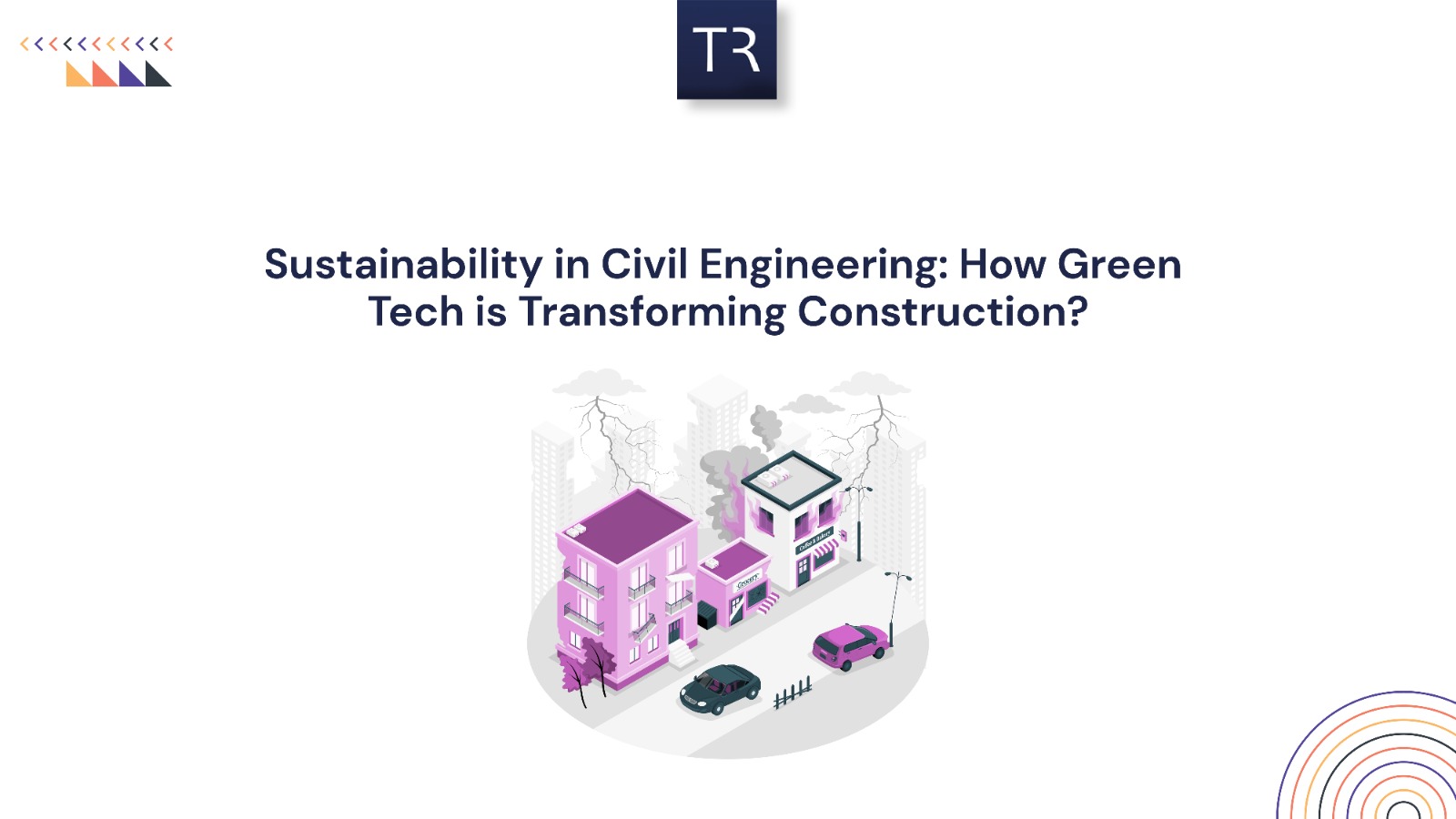Physical address:
573 Hutchinson Ln, Lewisville, TX 75077, USA.
Sustainability has become a game-changer in civil engineering, pushing the industry toward eco-friendly practices that reduce environmental impact. As the demand for sustainable buildings rises, green technology is revolutionizing construction, making it more energy-efficient, cost-effective, and environmentally responsible.
The Need for Sustainable Construction
Traditional construction practices are notorious for high carbon emissions, excessive waste, and heavy resource consumption. With climate change concerns growing, governments and industry leaders are focusing on sustainable alternatives. Green construction not only helps the planet but also reduces operational costs and increases property value.
Green Building Materials
The shift to sustainable materials is one of the most significant advancements in green construction. Some notable materials include:
- Recycled and upcycled materials – Utilizing waste materials reduces landfill burden.
- Sustainable concrete alternatives – Hempcrete, geopolymer concrete, and fly ash-based concrete are eco-friendly options.
- Bamboo and cross-laminated timber – These materials offer durability while significantly reducing carbon footprints.
Energy Efficiency in Construction
Energy consumption in buildings is a major concern. Green technology enhances energy efficiency through:
- Solar panels – Harnessing solar power reduces dependence on fossil fuels.
- Smart grid technology – AI-powered grids optimize energy use.
- Passive design strategies – Natural ventilation and insulation reduce energy demands.
Water Conservation Techniques
Sustainable construction also addresses water management with:
- Rainwater harvesting – Collecting and storing rainwater for reuse.
- Greywater recycling – Treating wastewater for non-potable use.
- Permeable pavements – Allowing rainwater to seep through, reducing runoff.
Waste Reduction Strategies
Minimizing waste is critical in sustainable construction. Effective methods include:
- Prefabrication and modular construction – Reducing on-site waste.
- Zero-waste sites – Implementing strict waste management protocols.
- Circular economy principles – Reusing and repurposing materials.
Smart and Green Infrastructure
Integrating technology with eco-friendly designs leads to smarter, greener infrastructure:
- IoT and AI in construction – Enhancing efficiency and sustainability.
- Green roofs and vertical gardens – Improving air quality and insulation.
- Low-impact development (LID) – Reducing ecological disruption in urban planning.
Sustainable Transportation in Construction
Transportation significantly affects construction’s environmental footprint. Solutions include:
- Electric and hybrid construction vehicles – Reducing emissions on job sites.
- Sustainable site logistics – Optimizing transport to minimize fuel consumption.
- Carbon footprint reduction strategies – Using local materials to reduce transport emissions.
Other articles you may find interesting
Government Regulations and Policies
Governments worldwide are enforcing green policies to promote sustainable construction:
- LEED and BREEAM certifications – Recognizing sustainable building efforts.
- Carbon tax and incentives – Encouraging eco-friendly choices.
- Global sustainability goals – Aligning construction with climate targets.
Challenges in Implementing Green Technology
Despite its benefits, green technology adoption faces hurdles:
- High initial costs – Green solutions often require larger upfront investments.
- Resistance to change – Industry professionals may be reluctant to adopt new methods.
- Lack of awareness and expertise – More education and training are needed.
The Future of Sustainable Civil Engineering
Innovation is shaping a greener future for civil engineering:
- AI and automation – Enhancing efficiency and sustainability.
- Emerging materials – Development of carbon-negative construction materials.
- Urban development trends – Smart cities incorporating sustainable infrastructure.
Conclusion
Sustainability in civil engineering is not just a trend—it’s the future. As green technology continues to evolve, the construction industry is becoming more efficient, cost-effective, and environmentally friendly. By embracing these advancements, we can build a sustainable world for future generations.
FAQs
1. What is the most sustainable building material?
Bamboo, recycled steel, and geopolymer concrete are among the most sustainable options.
2. How does green technology reduce construction waste?
It optimizes material usage, promotes recycling, and encourages modular construction to minimize waste.
3. What are the economic benefits of sustainable construction?
Lower operational costs, increased property value, and government incentives make green buildings financially attractive.
4. How can small construction projects adopt green technology?
Using local materials, improving insulation, and incorporating energy-efficient designs can make a difference.
5. What role does AI play in sustainable civil engineering?
AI enhances energy efficiency, optimizes designs, and improves waste management in construction projects.


